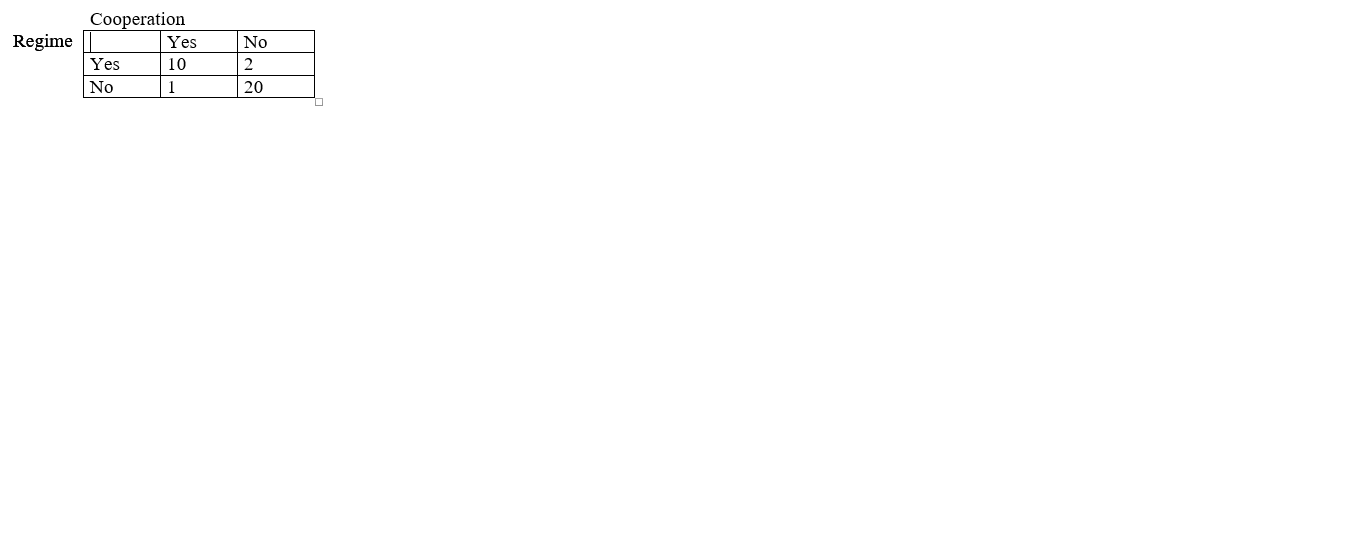The democratic principle of __________ describes the practice of presenting legislative seats in proportion to the number of votes.
A. Plurality
B. Exhaustive Ballot
C. Proportional Representation
D. Cumulative Voting
Answer: C. Proportional Representation
You might also like to view...
Suppose we want to test whether international regimes foster cooperation. The following data were collected. According to these hypothetical data, international regimes are _______________________ for cooperation.

a. necessary
b. sufficient
c. necessary and sufficient
d. neither necessary nor sufficient
Aside from voting, the next most frequent political activity that voters engage in is ______
Fill in the blank(s) with correct word
What played a key role in shaping France's postwar foreign policy? a. President Charles de Gaulle's disdain for -- and distrust of -- the special relationship between the U.S. and theUK
b. The nation's singular focus on stimulating foreign investment. c. The country's concern about the prospect of global warfare. d. President Charles de Gaulle's desire to strengthen relations with the U.S., UK, and Germany. e. France's fears of a massive, global economic recession.
Examine the role of minor parties in U.S. politics. How have minor parties affected the electoral system? What limitations have kept them from achieving major-party status? Provide a detailed assessment from the individual voter's perspective on
the utility of voting for a minor party. Use the presidential election of 2000 (Bush vs. Gore) as a test case. Cite, too, where Duverger's Law fits this scenario. What will be an ideal response?